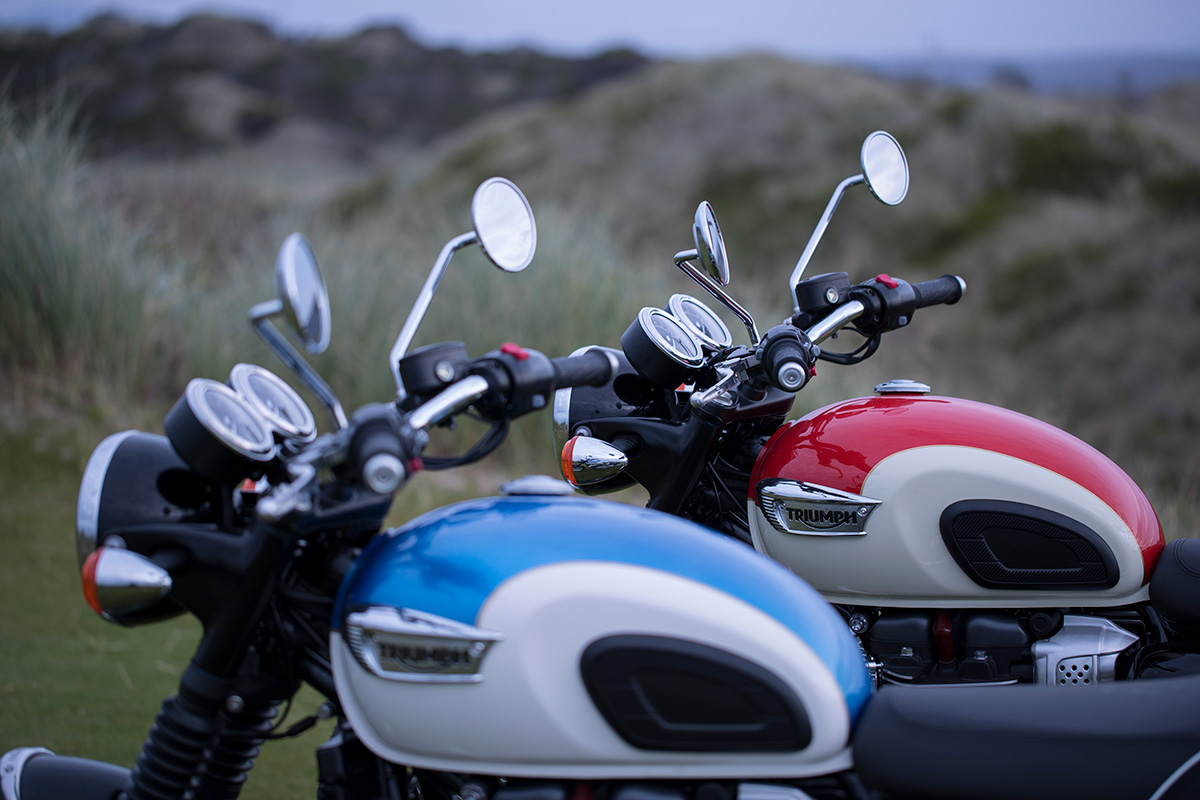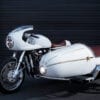Looking back over the past decade of publishing this website I can’t think of a year that offered more exciting new motorcycles than 2016. It’s clear that manufacturers have bought into the “new wave” of motorcycle customisation, recognising the attraction of classically styled motorcycles to backyard builders. One manufacturer, in particular, stood out in 2016 for the extensive revision and expansion of their modern classics range. That was, of course, Triumph Motorcycles.
In 2016 Triumph wiped their slate clean. They said fair well to the much loved Modern Classics range introduced back in 2000 and in its place they released a completely revised Bonneville that was developed with one goal in mind, to make it better. The 1200cc water-cooled Bonneville T120 and 900cc Street Twin were the first new Modern Classics to enter the market, followed closely by the awesome new Truxton R and somewhat controversial T120 Bobber. Then just when we thought we’d seen all the new Bonnevilles we could handle, Triumph announced the release of the Bonneville T100 and I headed down to Tasmania for a press ride to remember.
I joined Australia’s top motorcycle journalists for a 4-day lap of Tasmania clocking up well over 1000kms on some of the island state’s best roads. This time the launch would introduce us to 2 new models in the Modern Classics range, the “entry level” Bonneville T100 and the cafe racer inspired Street Cup. During the event, we spent 2 days on each bike circumnavigating Tasmania, the southern most state of Australia.
After the 45 minute flight from Melbourne, we touched down in the northern town of Launceston and spent our first evening at the Barnbougle Dunes Golf club. The next morning we geared up for our first day of riding that would take us 300km south along the eastern seaboard of Tasmania to Wine Glass Bay in the Freycinet National Park.
As we walked out to the car park where the fleet of brand new T100’s awaited I was once again taken back by just how good looking these bikes are. As you’ve heard me say before these water-cooled motors look even better than the previous air-cooled versions despite having a radiator strapped to them. This is an achievement the Triumph engineers and designers should be very proud of and at this risk of sounding cliched, they’ve hit the nail on the head with their styling.
The fleet included all of the available standard colourways and variants of the T100 including the 1959 inspired Tangerine and Baby blue paint schemes and my personal favourite, the T100 Black. After having the privilege of riding a 1200cc T120 for a couple of months I noted the slight differences between the 2 bikes, the most obvious being the lack of the faux Amal carbs. In their place was the same brushed aluminium cover found on the Street Twin, which was a little disappointing for me. Some punters wrote the fake carbs off as a bit of a joke, but personally, I think they’re a clever design touch that add much more to the bike than a drilled bit of aluminium. I also noted the single disc up front rather than the T120’s two and the grab rail was gone from the rear of the seat, which in my opinion is an improvement.
Other differences between the T100 and the T120 were more subtle, such as the simplified switch blocks, the removal of the adjustable riding modes, no heated handgrips and the lack of ‘HT’ (high torque) designation on the engine stamp.
During our debrief the crew from Triumph explained that the T100 isn’t just a lower spec, lower cost version of its big brother, which I admit I had it pinned as being. It’s clearly very similar aesthetically, but it’s the subtle differences in specifications that make all the difference. As quoted earlier the Triumph team describes the T100 as their “entry-level” Bonneville. In Australia, entry-level motorcycles are generally defined as those ridden by beginners, but the T100’s 900cc engine means probationary riders are not eligible to ride them. So in this case entry-level takes on a different meaning.
Price is obviously a big factor. At around $16,000 (Aussie dollars) the T100 is about $3,000 cheaper than the T120. Three grand is certainly not to be sniffed at and considering the differences between the 2 bikes you’re not missing out on much for the money you’ll save. Then there are the differences in weight, dimensions and power. These differences would make the T100 attractive to riders who aren’t simply interested in power, are less experienced or perhaps even smaller framed. So, in this case, I think we can say that “entry level” can be translated as a more accessible and easier-to-ride Bonneville.
The T100 tips the scales at around 213kg, a noticeable 10kg less than the T120. The wheelbase is also slightly shorter and the seat height lower. Suspension, however, is identical to the bigger bike (KYB forks and adjustable shocks) which Triumph says amounts to a better handling motorcycle, but I’m on the fence regarding that. You also get the same ABS and traction control as the T120 and access to all of the same aftermarket parts since the two bikes are so similar. Then there’s the 900cc engine. This is the exact same engine you’ll find in the Street Twin. It’s a great package with very predictable power delivery and more than enough grunt for your average commuter. For me though this was where I started weighing up the price difference.
After spending so much time on the T120 I’d really fallen for its deep growl and ample torque, which the T100 lacks. On the T100 I found that I was hitting the rev limiter more than I ever did on the T120 during more spirited riding and it simply didn’t pull off the line as hard as the 1200HT motor. During our lunch break discussions, this was an opinion shared by a few of the other journos and “underpowered” was a term I heard used several times. We had however spent our 2 days on the T100 exploring country roads, but the reality is that this is a commuter motorcycle, not a tourer so these opinions may not have been aired if speed limits were lower.
I never owned one of the outgoing 865cc Bonnies and had very limited experience riding them. I can say however that all the complaints I heard about them don’t apply to the 2016 T100. On this new Bonneville, everything works as it should and more importantly as you’d like it to. Riding this bike at any speed is a cinch and when you want it to move it will do so with a satisfactory amount if vigour. What really impresses me though is the quality. These aren’t the cheapest “modern classics” on the market, but they are certainly the best finished and best looking. Out of the box, this is a bike you could happily run in stock form for its entire lifetime and never get sick of looking at it. The blue and orange versions weren’t my cup of tea, but I’d happily park the matte finish T100 Black in my garage any day.














